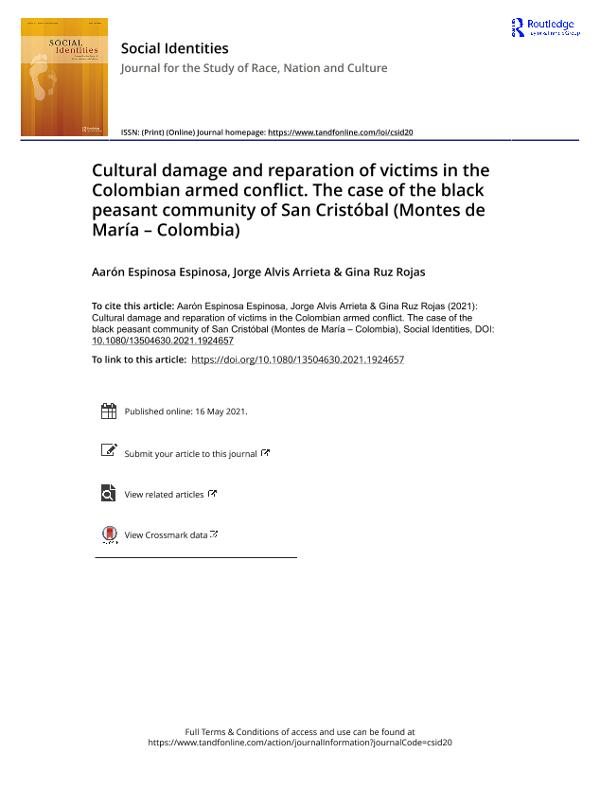Abstract
The aim of this study is to identify and analyze the cultural damage caused by the armed conflict in the black peasant community of San Cristóbal, in Montes de María, one of the regions most affected by the prolonged conflict in Colombia. A conceptual and methodological framework is proposed to address, from a interdisciplinary scope, culture in victim reparation processes, based on the systematization of the conflict effects. Thus, by
synthetizing community knowledge and experience on how cultural assets and practices have been affected by violence, capability and asset planning approaches are applied to discuss how the cultural dimension of development should be incorporated into collective reparation measures that are being executed by the Colombian State. It was found that the action of armed groups affected popular feats, traditional medicine,
agriculture and community social capital in the broad sense. Hence, the reparation actions that are built under the state initiative consider the cultural dimension, for which they must directly involve the affected community and recover the social capital associated with traditional festivals, where multiple oral traditions and expressions, music, dance and communication were severely damaged for more than two decades of armed disputes in the area.














